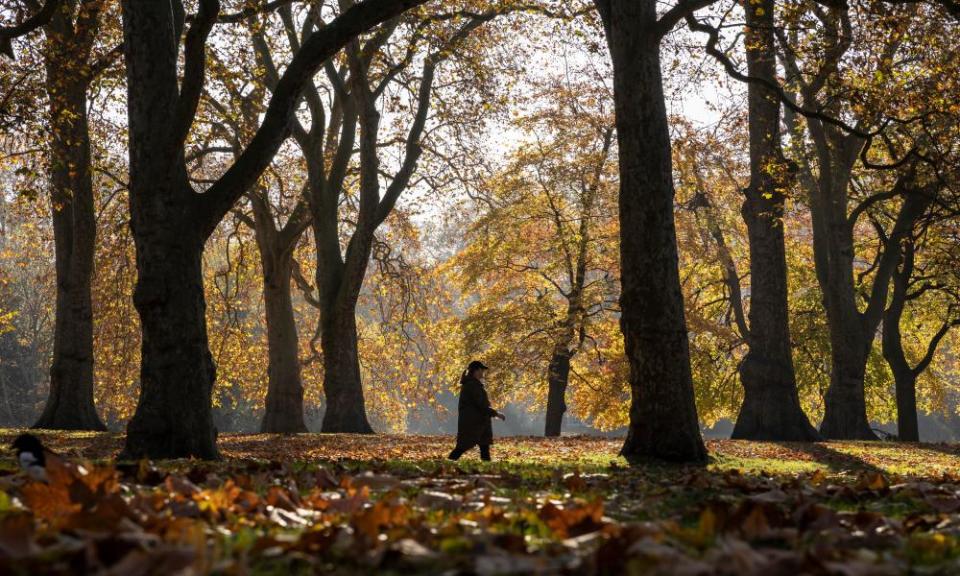As a widow, I know the strangeness of grief and that ghosts come in many forms

Grief totems aren’t always easy to rationalise. Once a loved one has departed, their footprints can be found everywhere and they often linger in the most unexpected places. A toothbrush casually discarded by the sink. An airline boarding pass shoved into a tatty paperback novel. A few months after my husband died in 2018, I found his credit card during a routine search for my trainers, and with a reverence one might pay a precious artefact, I stroked my fingers over the braille of his name before placing it back inside his wallet.
“I’ve got ghosts on my phone,” the Bafta-winning writer, director and actor Mark Gatiss mused in an interview with the Radio Times. “I know this isn’t unique to me but I’ve lost my mum, my sister, my brother-in-law and now my dad, and there is something very odd about being orphaned, even at 54.”
Ghosts, phantoms, spectres. For the griever who has been left behind there can be strange comfort to be found in these random markers – the digital ones, too. There is an ethereal otherworldliness that can be seen on an iPhone screen. Speaking of this strange and haunting effect in grief – which is, at its heart, the everyday made holy – Gatiss described the jarring discord between “the curious feeling” and “the practicalities” that can follow a death. “Like I’ll never ring his telephone number again,” he said, referring to the recent loss of his father. And yet, in spite of this rational knowledge, he continued, “Occasionally, when I try to thin out my contacts, there are some numbers I just can’t delete.”
Reading these comments, I was reminded of the day, about 10 months after his death, that I listened to voicemails left by my late husband. Countless messages that were still logged and listed on my iPhone; the recently departed mingling like ghostly wisps with the living – my mum, my best friend, the engineer cancelling our arranged boiler inspection next week. When I pressed on the symbol for loudspeaker, the mellow tones that were released seemed to float into the air like a supernatural substance from an enchanted lamp. These voice memos occupy a transitory space between the past and the present – and it can never be as straightforward as simply swiping a screen and pressing the option marked “delete”. There is no neat and linear way to grieve, despite what we’ve traditionally been told.
In Patti Smith’s haunting memoir M Train, she writes about her late husband, Fred “Sonic” Smith, and the spells that can be cast by things. Fred’s favourite childhood toy was a red plastic cowboy, she tells us, and one day, when his mother was cleaning his room, it had simply disappeared. Fred came to believe that certain things “become part of our common treasure, occupying a special place in the Valley of Lost Things”. Echoing the nonsensical nature of loss, Smith asks: “Why is it that we lose the things we love, and things cavalier cling to us and will be the measure of our worth after we’re gone?”
These days it’s a question that permeates our digital spaces, too. A different kind of treasure. Twitter threads and Instagram posts, WhatsApp groups and voice messages. It’s been three years since my husband died and my instruction to memorialise his Facebook page, a request that had to be accompanied by a screenshot of his death certificate, was only emailed to Mark Zuckerberg’s HQ a few weeks ago. In folklore, a ghost is usually a hazy, semi-transparent outline of a departed soul. In reality, apparitions can be all the fragments that make up the life you had, the person you love, and the memories you still treasure. A bank card hiding between the boxes of shoes. A number still logged on your “favourites” list. A bowlegged cowboy moulded from red plastic. Grief totems and beloved artefacts, our common treasure, occupying that special place between “here” and “there”, between “us” and “them”, the objects we cannot rationalise in the Valley of Lost Things.
Kat Lister is author of The Elements: A Widowhood

 Yahoo Finance
Yahoo Finance 